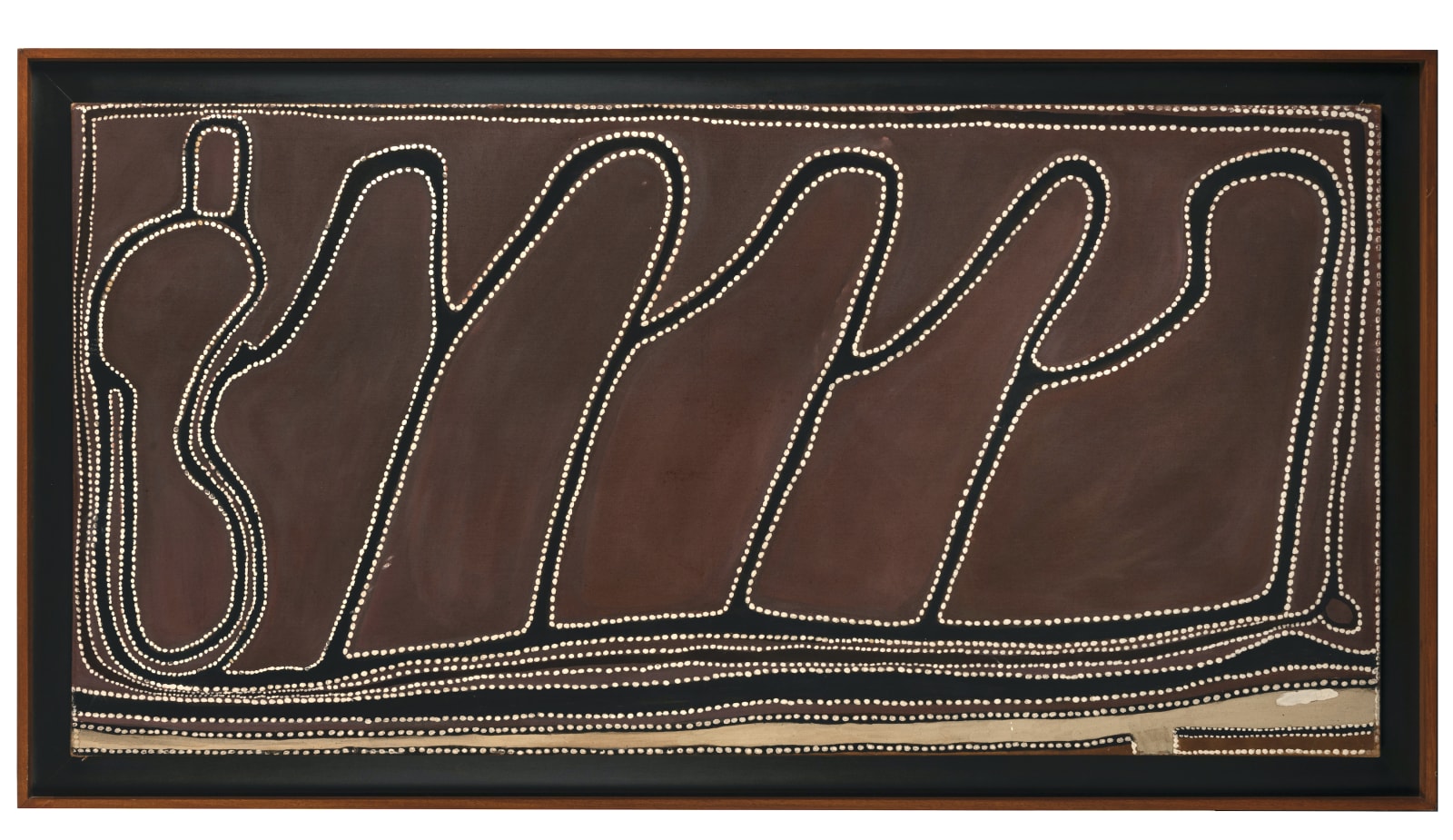Rover Thomas Wangkajunga/Kukatja language group, circa 1926-1998
Provenance
The Artist, painted at Turkey Creek, Western Australia, 1989
Ian Jesson, Manager of the Wankgul Store, Turkey Creek, Western Australia, acquired directly from the artist
Sotheby's, 28 June 1999, Lot 87 (with an accompanying document of authenticity signed by Mary Matcha dated 26 Nov 1998)
Chris Robinson, Hong Kong
Vivien Anderson Gallery, Melbourne
Lauraine Diggins, Victoria, acquired from the above
Lauraine Diggins Fine Art, Melbourne (label attached verso)
Private collection, Victoria
Lawson-Menzies, Sydney, 14 November 2007, Lot 59
Private Collection, Melbourne
D’Lan Contemporary, Melbourne
Collection of Steve Martin & Anne Stringfield, New York
Exhibitions
Masterwork, Vivien Anderson Gallery, Melbourne, 25 October - 17 November 2001, cat. 7
Annual Collectors' Exhibition 2002, Lauraine Diggins Fine Art, 20 September - 14 December 2002, cat. 76
Open Door to Dreamtime Aboriginal Art of Australia, Centre Cultural Caixa de Girona, Spain, 2004
60 over 50: 60 Paintings from 50 Years of Australian First Nations Art, UOVO, New York, May 2023
Literature
Vanessa Merlino, 60 over 50: 60 Paintings from 50 Years of Australian First Nations Art, UOVO, May 2023, p. 14 - 15 (illus.)Rover Thomas is widely regarded as the central figure in the development of the painting movement that emerged in the eastern Kimberley during the 1980s, although he was not the first major artist from the region to work in a modern context. Bungullgi was created between 1986 and 1991, a period when Thomas was producing some of his strongest work. At that time, his paintings were being sold through his official representatives: the late Mary Macha—who was instrumental in launching his career—and the government-supported Waringarri Arts centre in Kununurra.
Bungullgi is a fine example of Rover Thomas' artistic genius. It is one of many paintings by the artist where he interprets the landscape of the eastern Kimberley as a palimpsest of ancestral creative activity and physical geography, coupled with his personal experience of place. It bears the hallmarks of the artist's best work; sureness of hand, subtlety of colour, original compositional format and his unique sense of touch in the application of paint.
Bungullgi is depicted in the smoky late afternoon light. Painted on the cusp of Rover Thomas’s greatest works, in the middle of his best period, 1987-91…In Bungullgi Thomas has made the Ragged Range the ostensible landscape subject but we are not seeing a view, en plain air, but rather a recollection constructed of the salient elements of geography, history, and story, arranged to reveal what lies within the order of things. Bungullgi is a multivalent place encompassing all.
-Text from Dr Suzanne Spunner
